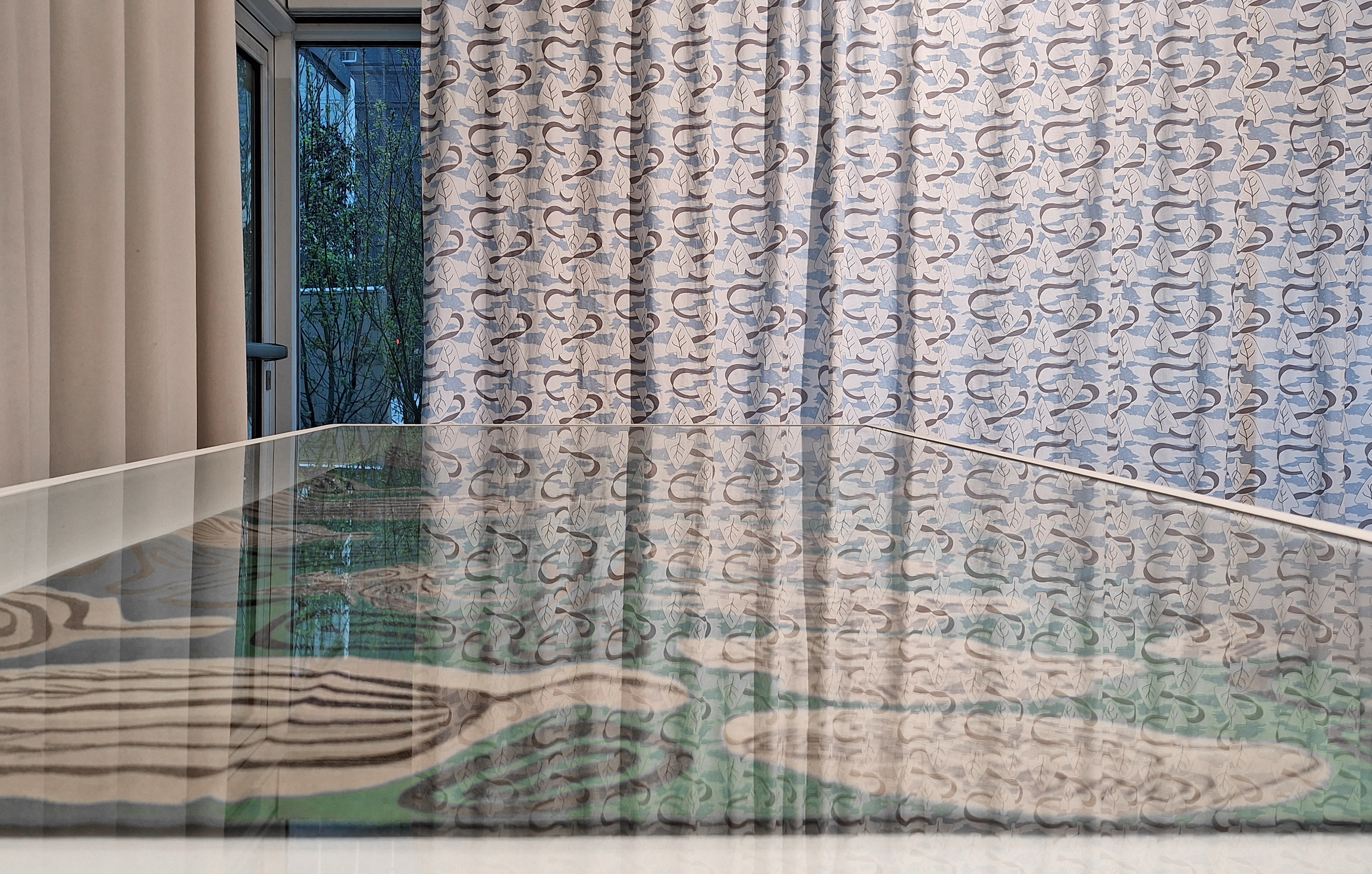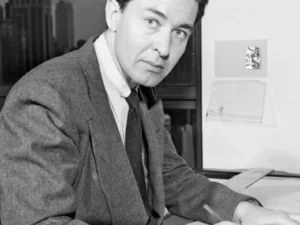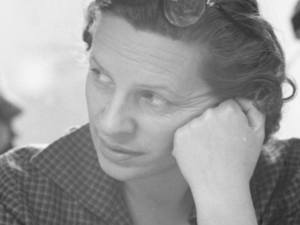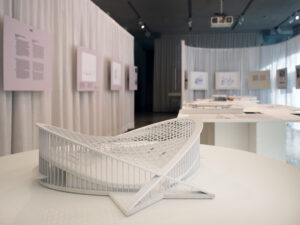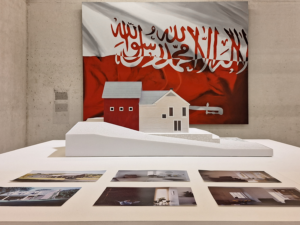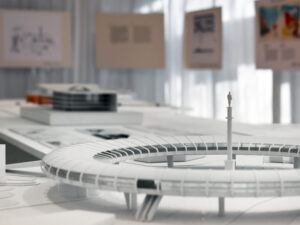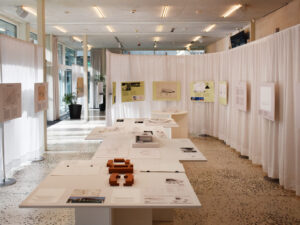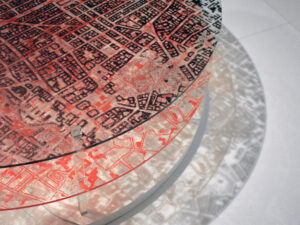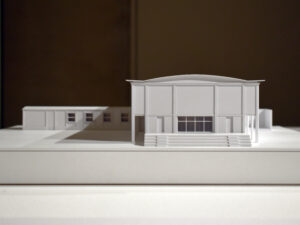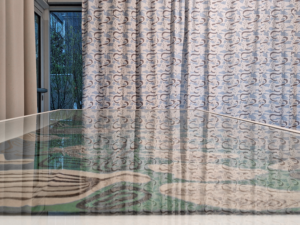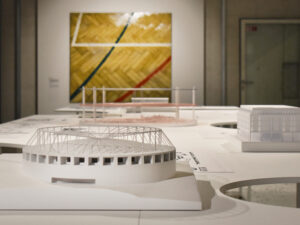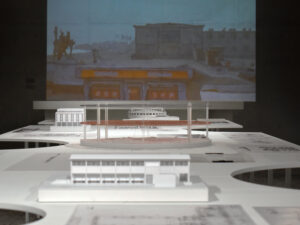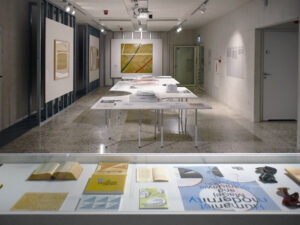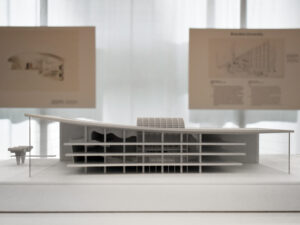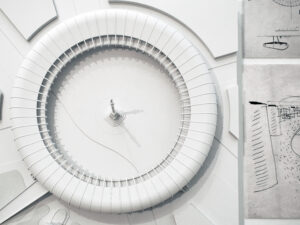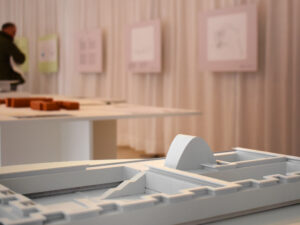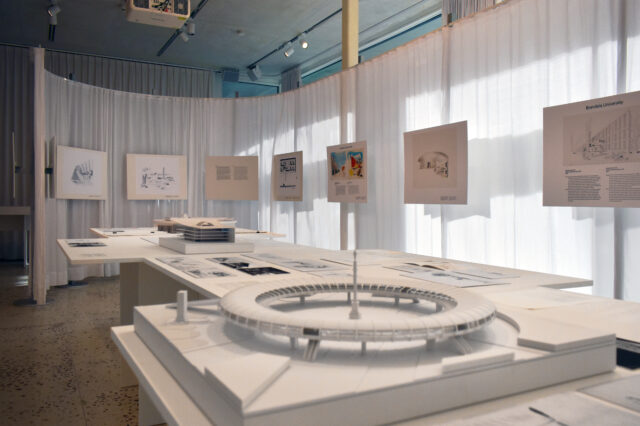
Maciej (Matthew) Nowicki and Stanisława Sandecka-Nowicka and are two significant figures in the history of American and Polish architecture.
She was a talented graphic artist and designer and the first female professor of architecture in the history of the United States. He collaborated – despite his young age – with renowned architects on prestigious projects whose implementation was interrupted by his tragic death. Their story is a fascinating tale of creative passion, their life together, and the possibilities and limitations of the turbulent beginning of the 20th century.
The dramatic history of their homeland, their lived experiences, but also a great hope for a better future laid the foundation for an innovative curriculum and architectural designs that changed the history of the profession. By combining the latest building developments with great respect for the local context, their readiness for dialogue and understanding of others, as well as their enormous talent, they created a humanistic modernism that opened the contemporary understanding of architecture to previously unknown realms.
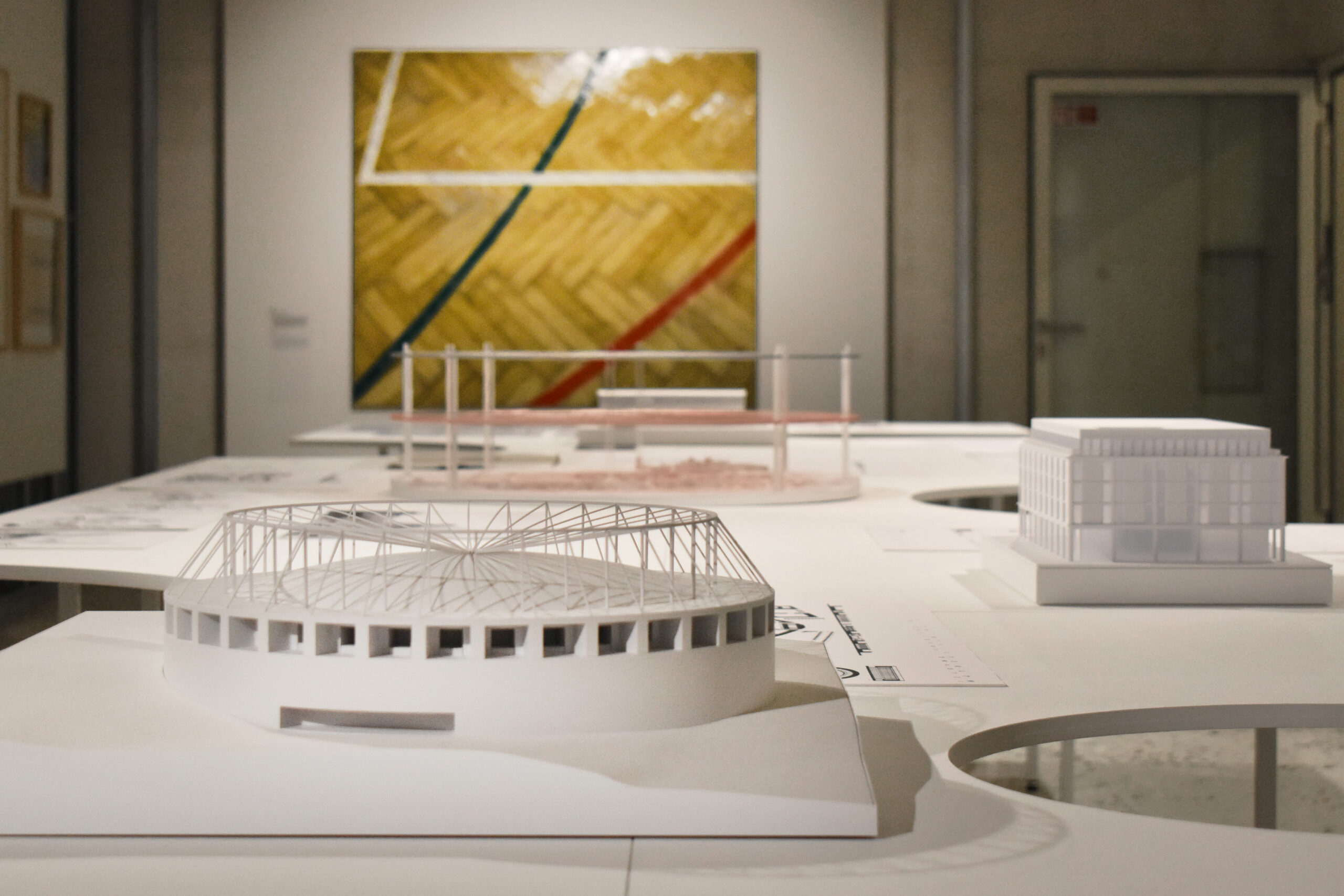
Rebuilding Warsaw
The first attempts to plan the post-war reconstruction of Warsaw began under the German occupation. Students and teachers at the underground school of architecture were conscious of the necessity of future reconstruction. Immediately after the war, Maciej Nowicki, was appointed the main planner of the central part of Warsaw.
Part of Nowicki’s proposal for the city center was a new parliament building. It was monumental in its round shape and experimental in its construction, with a roof suspended from steel cables.
The business district, planned on the site of the former Warsaw Ghetto in the Grzybów district, presented a design challenge due to the overwhelming destruction and rubble. Instead of removing the rubble, Nowicki decided to incorporate it into his design to differentiate the streetscape. To maintain the human scale of the complex, the maximum height of the commercial buildings was set at four stories. He planned to use prefabricated structural elements to facilitate a quick construction process.
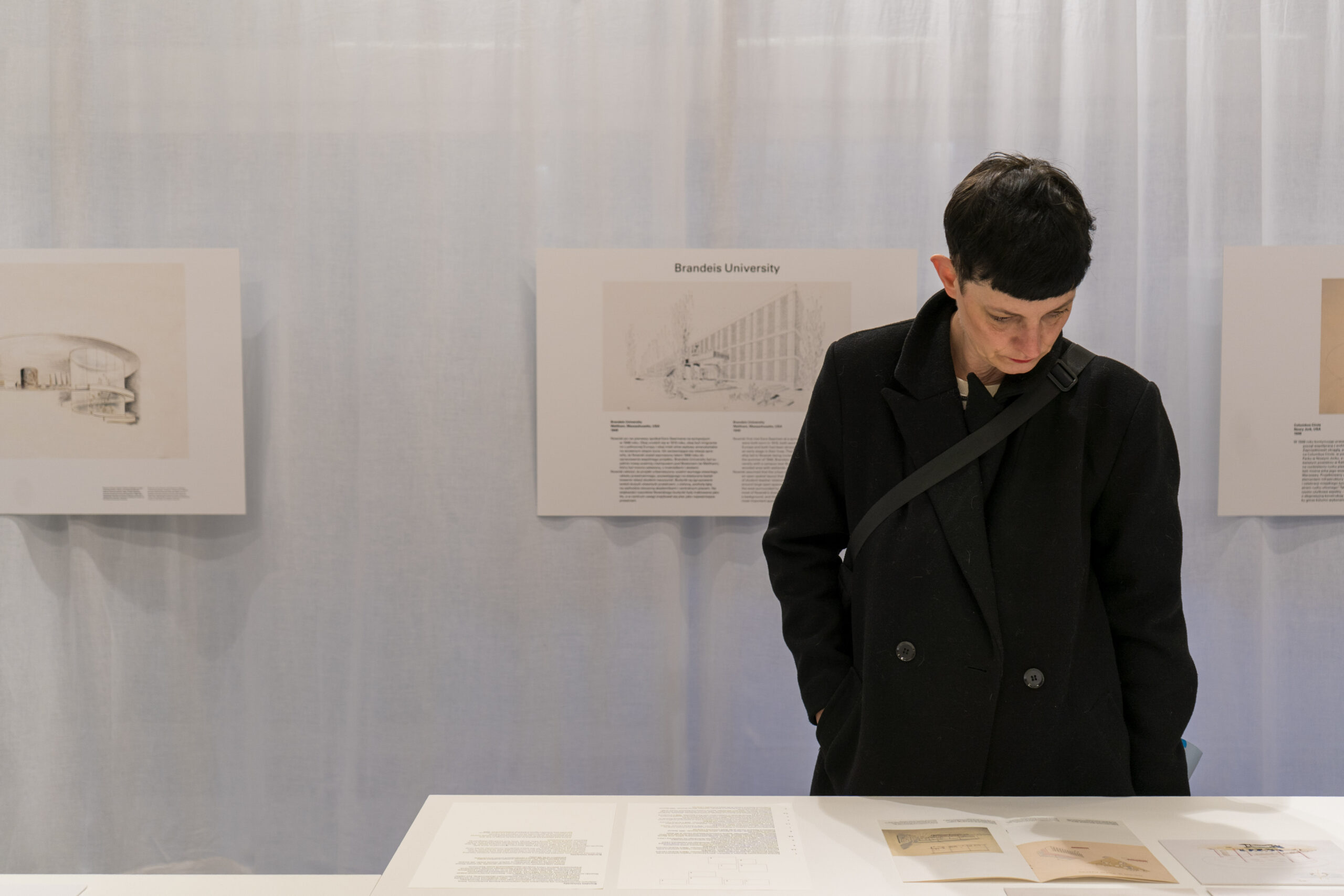
United Nations Headquarters in New York
In late 1945, Nowicki went to the United States as a cultural advisor to the Polish diplomatic mission and later participated as a Polish consultant in the Board of Design’s work on the new UN Headquarters. He became part of the working group headed by Wallace Harrison, which included notable figures such as Le Corbusier and Oscar Niemeyer.
In the case of the UN he believed that the design of its headquarters was a means of defining the identity of the organization. Nowicki saw here not only a cluster of buildings, but also a physical manifestation of the united postwar world. He was the author of five concepts; only two of which have survived to the present day.
Chandigarh, India
Nowicki’s last major commission was the design of Chandigarh – a new capital of the northern Indian state of Punjab, on which he worked with Albert Mayer and Julian Whittleys.
The Indian authorities, intrigued by Nowicki’s designs and methodology, offered him a ministerial post to oversee the construction of Chandigarh. Before the project could get underway, however, Nowicki had to return to Raleigh and died in a plane crash on his way home.
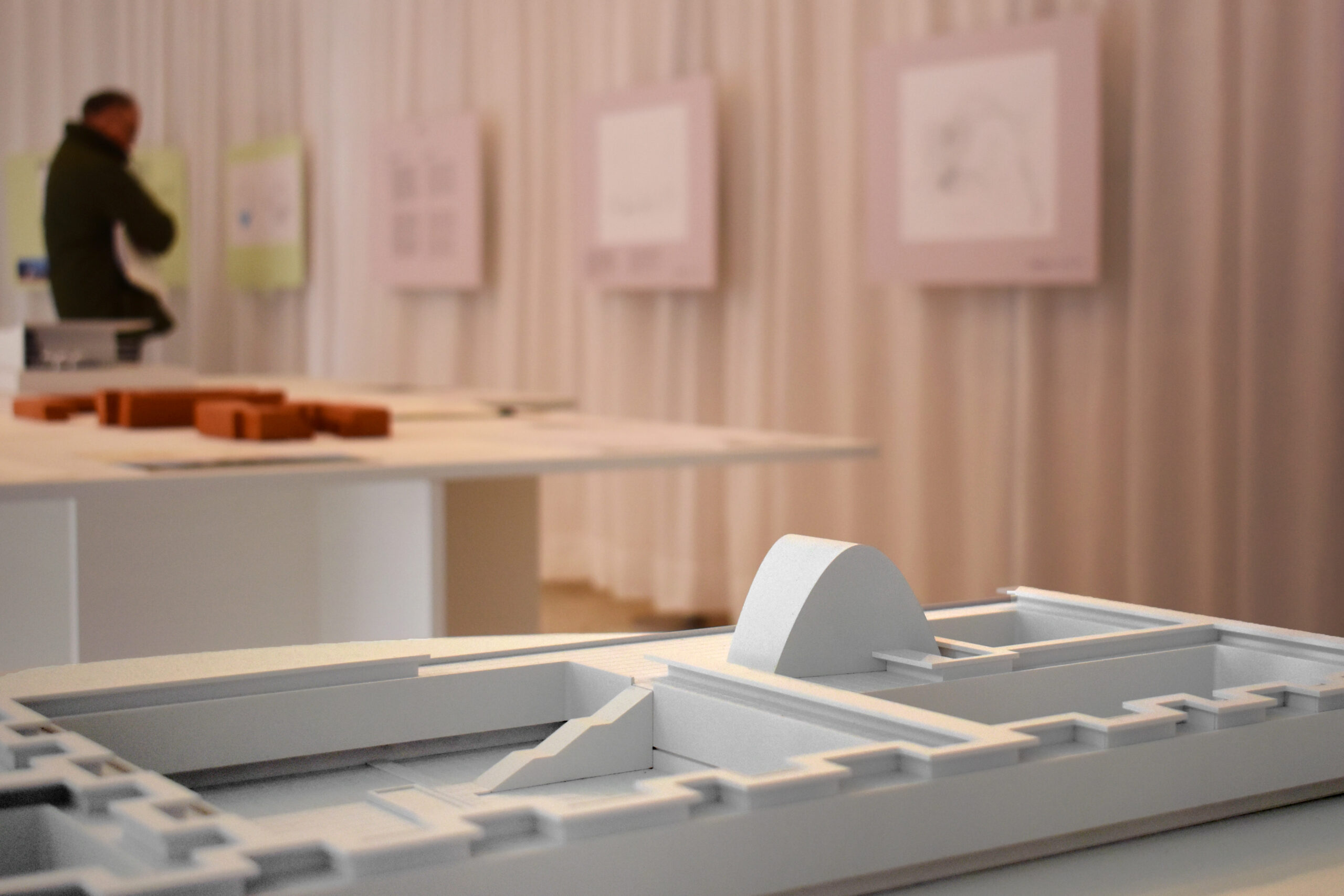
Side events:
- 3.04 – 6 p.m. – Opening of the exhibition
- 6.04 – 2 p.m. – Curator’s tour
- 10.04 – 11 a.m. – Tours for schools
- 16.04 – 10 a.m. – Tours for schools
- 24.04 – 10 a.m. – Tours for schools
- 8.05 – 10 a.m. – Tours for schools
- 22.05 – 10 a.m. – Tours for schools
- 22.05 – 6 p.m. – Artistic tour with Centrala and Alicja Bielawska
- 25.05 – 10 a.m. – Intergenerational workshop
- 29.05 – 10 a.m. – Tours for schools
- 29.05 – 6 p.m. – Thematic tour with Grzegorzem Piątkiem – warsaw architects
- 31.05 – 2:30 p.m. – Curator’s tour with Kacper Kępiński
- 4.06 – 4 p.m. – Tour with Karolina Częczek and Kacpr Kępiński – in english
- 5.06 – 10 a.m. – Tours for schools
- 12.06 – 10 a.m. – Tours for schools
- 13.06 – 6 p.m. – Lecture with Andrzej Skalimowski and Przemysław Gasztold
- 15.06 – 10 a.m. – Family workshop
- 15.06 – 4 p.m. – Curator’s tour with Kacper Kępiński
- 26.06 – 6 p.m. – Thematic tour with Grzegorzem Piątkiem – global architects
- 1.07 – 5 p.m – Tour and workshop – “Orzeł” Sports Club
- 13.07 – 4 p.m. – Closing curator’s tour
Creators of the exhibition:
Organizers:
Curator:
- Kacper Kępiński
Curatorial collaboration:
- Karolina Częczek, Grzegorz Piątek
Exhibition architecture:
- Only If Architecture (Karolina Częczek)
Visual identity:
- Katarzyna Nestorowicz
Exhibition graphic design:
- Karolina Częczek, Katarzyna Nestorowicz, Weronika Nowak
Exhibition coordination:
- Mateusz Włodarek
Production and licensing:
- Mateusz Włodarek, Kacper Tomaszewski, Weronika Sołtysiak
Communication:
- Dominik Witaszczyk, Aleksandra Zaszewska
Coordination of accompanying events:
- Marta Baranowska
Educational program:
- Karolina Scheibe-Skorczyk, Wioletta Januszko, Natalia Cichoń
Organisational cooperation:
- ZODIAK Warsaw Pavilion of Architecture – Monika Komorowska, Wioletta Januszko, Artur Wosz, Natalia Cichoń
Editorial team:
- Urszula Drabińska
Translations:
- Natalia Raczkowska
Photo post-production:
- Weronika Nowak
Exhibition implementation:
Models:
Artists:
- BAL architektek (Barbara Nawrocka, Dominika Wilczyńska i Dominika Janicka), Alicja Bielawska, Centrala (Małgorzata Kuciewicz i Simone De Iacobis), Jakub Ciężki, Wiktor Dyndo, Szymon Rogiński
Archival materials:
- Centre Pompidou, NCSU University Libraries, Muzeum Warszawy, Muzeum Narodowe w Warszawie, Muzeum Architektury we Wrocławiu, Cranbrook Center for Collections and Research, UPenn Architectural Archives, Walker Arts Center, Smithsonian Archives of American Art, The Art Institute of Chicago
Acknowledgments:
- Peter Nowicki z rodziną, Burak Erdim, Dominika Stecyk, Izabela Gola, Izabela Iwanicka-Dzierżawska, Piotr Kibort, Ewa Perlińska-Kobierzyńska, Katarzyna Iwańska-Rybka, Wanda Urbańska, Katie Mullen, Ireneusz Kotlewski
Media patronage:
- Architektura i Biznes, Architektura-Murator, Architectural Digest, Arte.tv, Czas Kultury, Notes na 6. tygodni, RMF Classic, Spotkania z Zabytkami, TVP Kultura, Vogue Polska
Co-financed by the Polish Ministry of Culture and National Heritage
